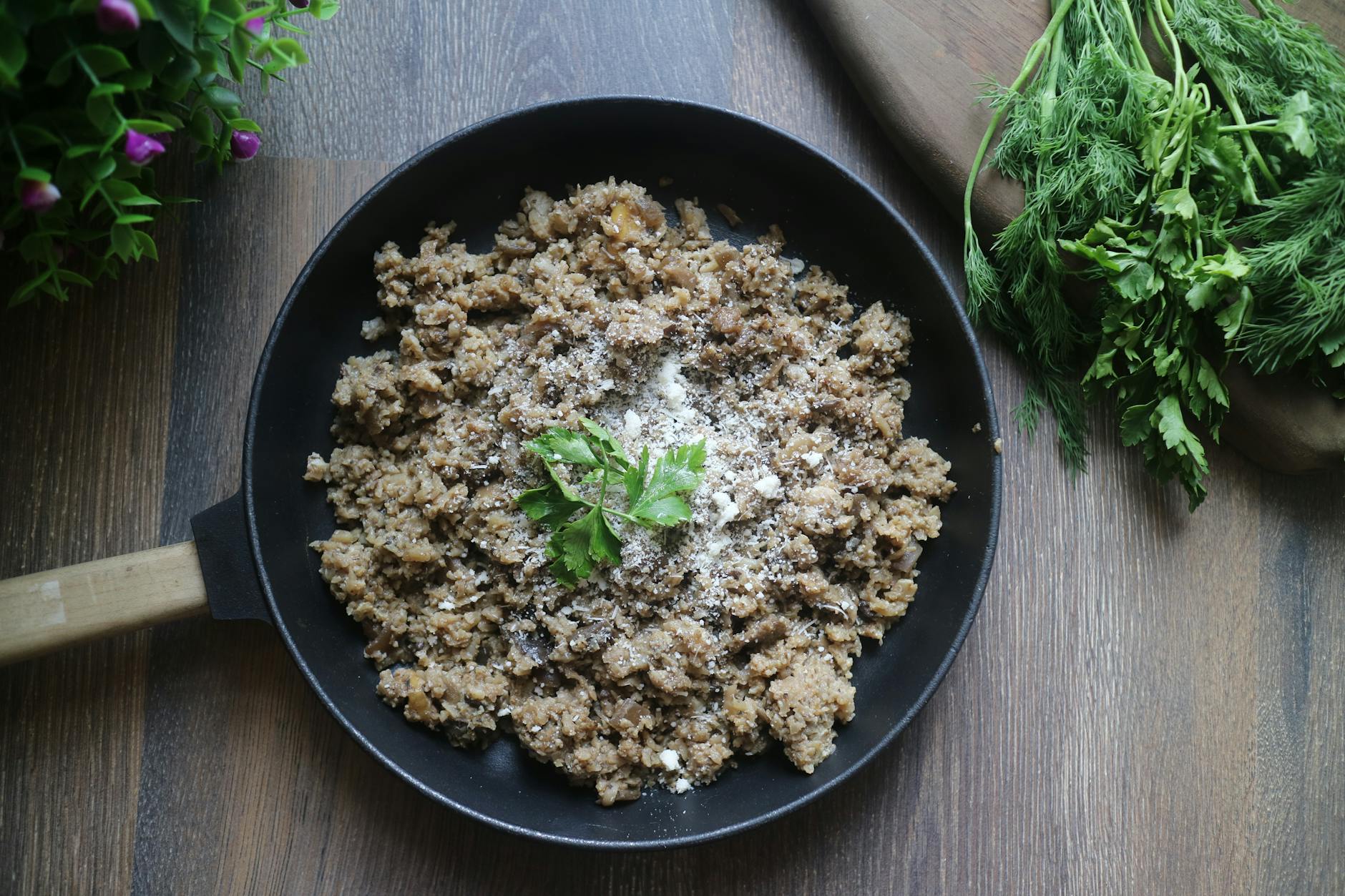Uncover the secrets of the keto diet revolution and learn how feasting on fat can lead to ultimate health benefits.
Table of Contents
- What is ketosis and the keto diet?
- Getting started with the keto diet for beginners
- Low carb fruits to include in a keto diet
- Simple keto meal plan and keto snacks
- Keto diet plans and menus for different dietary preferences
- Keto diet for women over 50
- Understanding keto bread and other keto-friendly alternatives
- The science behind keto max and its benefits
- The importance of a diverse diet on a keto plan
- Frequently asked questions about keto dieting and resources for success
Ketosis and the keto diet have taken the nutrition world by storm in recent years, promising rapid weight loss, improved energy levels, and better overall health. But if you’re new to the concept of ketosis and the keto diet, diving into this high-fat, low-carb lifestyle can feel overwhelming. That’s why we’ve created the ultimate beginner’s guide to help you navigate the world of keto with confidence and ease.
What is ketosis and the keto diet?
Ketosis is a metabolic state where your body burns fat for fuel instead of glucose. The keto diet, short for ketogenic diet, is a high-fat, low-carb eating plan designed to trigger and maintain ketosis. By drastically reducing your carbohydrate intake and increasing your fat consumption, you can train your body to become a fat-burning machine.
The benefits of entering and maintaining ketosis are far-reaching. From faster weight loss and increased mental clarity to reduced inflammation and improved blood sugar control, the keto diet offers a plethora of health perks for those willing to give it a try.
Getting started with the keto diet for beginners
Transitioning to a keto diet can be daunting, but with the right tips and mindset, you can set yourself up for success. Some common mistakes to avoid when starting a keto diet include not eating enough fat, forgetting to stay hydrated, and neglecting electrolyte balance.
Tracking your macros—focusing on keeping your daily carbohydrate intake under a certain threshold, while prioritizing healthy fats and moderate protein consumption—is crucial for achieving and maintaining ketosis. Applying some simple tricks and techniques can help you navigate the initial challenges of starting a keto diet with confidence.
Low carb fruits to include in a keto diet
While the keto diet restricts the intake of traditional high-sugar fruits like bananas and grapes, many low-carb options are fair game. Berries such as strawberries, blueberries, and raspberries are excellent choices for adding a touch of sweetness to your meals while keeping your carb count in check.
By incorporating low carb fruits into your daily meal plan, you can enjoy a variety of flavors and nutrients without sabotaging your ketogenic goals. These fruits also offer essential vitamins, minerals, and antioxidants that support overall health and wellbeing.
Simple keto meal plan and keto snacks
A beginner-friendly meal plan can be a game-changer when starting out on a keto diet. Sample meal plans can help you plan ahead, stay on track with your macros, and avoid the temptation of reaching for high-carb convenience foods when hunger strikes.
On-the-go keto snacks are essential for busy individuals looking to maintain their fat-burning state while out and about. Stocking up on easy keto snacks like nuts, seeds, cheese, and olives can help you stay satisfied and energized throughout the day.
Keto diet plans and menus for different dietary preferences
Any dietary preference can be accommodated on a keto plan, whether you’re a vegetarian, vegan, or meat-eater. By customizing your meal plan to fit your specific needs and preferences, you can enjoy all the benefits of the keto diet while still meeting your nutritional requirements.
Diverse keto food options allow for a creative and satisfying eating experience, with endless possibilities for delicious, keto-friendly meals that keep you motivated and excited about your dietary journey. Experimenting with different foods and flavors can help you stay engaged and committed to your keto food plan.
Keto diet for women over 50
Women over 50 can also thrive on the keto diet, enjoying the same benefits as their younger counterparts. The keto diet can support healthy aging, weight management, and overall vitality in women in this age group.
| Chapter | Title |
|---|---|
| 1 | Introduction to the Keto Diet |
| 2 | Understanding Ketosis |
| 3 | How to Start the Keto Diet |
| 4 | Keto Diet Benefits |
| 5 | Keto-Friendly Foods |
| 6 | Keto Recipes and Meal Plans |
| 7 | Exercise and the Keto Diet |
| 8 | Supplements for Keto Success |
Tailoring a keto meal plan specifically for women over 50 can help address unique nutritional needs and health concerns. By incorporating nutrient-dense foods and keeping an eye on portion sizes, women in this demographic can find success and satisfaction on a keto eating plan.
Understanding keto bread and other keto-friendly alternatives
Eating bread on a keto diet is possible with keto-friendly bread options or creative substitutes like cloud bread or flaxseed meal bread. These alternatives allow you to enjoy your favorite breaded foods without disrupting your ketogenic state.
Exploring the world of keto bread and other low-carb baking options can open up a world of culinary possibilities on a keto diet. With a bit of experimentation and creativity, you can indulge in traditional bread-based treats without sacrificing your dietary goals.
The science behind keto max and its benefits
Keto max refers to products designed to enhance the benefits of the keto diet, such as increasing fat burning or supporting appetite control. Understanding the science behind keto max supplements can help you make informed decisions about incorporating them into your daily routine.
Reviews and testimonials from individuals who have tried keto max products can offer valuable insights into their efficacy and impact on ketosis. By educating yourself on the science behind keto max offerings, you can optimize your keto diet experience and potentially achieve even greater results.
The importance of a diverse diet on a keto plan
A diverse diet is crucial for maintaining long-term success on a keto plan. By incorporating a variety of foods and flavors into your keto meal plan, you can avoid food boredom and ensure you are meeting your nutritional needs.
Experimenting with different ingredients and cuisines can add excitement and enjoyment to your keto journey. With a diverse diet, you can keep your taste buds happy and your body nourished, making your keto lifestyle sustainable and satisfying in the long run.
Frequently asked questions about keto dieting and resources for success
As you embark on your keto journey, you’ll likely have questions and seek guidance on various aspects of the diet. Finding reliable information and support resources can help you navigate any challenges and stay motivated along the way.
From meal planning tools and recipe inspiration to online communities and support groups, a wealth of resources exists to assist you in achieving your keto goals. Armed with knowledge and a willingness to explore, you can confidently embrace the keto diet revolution and reap the benefits it has to offer.
Feast on fat, fuel your body with ketones, and embrace the transformative power of the keto diet. With this ultimate guide as your companion, you can navigate the keto landscape with confidence and lay the groundwork for a healthier, happier, and more energized you.
Is the keto diet safe for everyone?
The keto diet is generally safe for most people, but individuals with certain medical conditions should consult a healthcare provider before starting. Pregnant or breastfeeding women, those with gallbladder or liver issues, and individuals with eating disorders should approach the keto diet with caution.
Can I still eat fruits on a keto diet?
While high-sugar fruits should be limited on a keto diet, low-carb options like berries can be enjoyed in moderation. These fruits offer antioxidants, fiber, and vitamins, making them a beneficial addition to your keto meal plan while keeping your carb intake in check.
How long does it take to reach ketosis on a keto diet?
The time it takes to enter ketosis can vary from person to person. Generally, it may take 2-7 days of strict carbohydrate restriction to achieve ketosis. Staying hydrated, monitoring your macros, and being consistent with your dietary choices can help speed up the process.
Can I exercise on a keto diet?
Yes, you can exercise on a keto diet. Some individuals may experience an adjustment period where their performance temporarily decreases due to the shift in fuel sources. Once fully adapted, many people find they have increased endurance and improved recovery. Staying hydrated and replenishing electrolytes are important during exercise on a keto diet.





